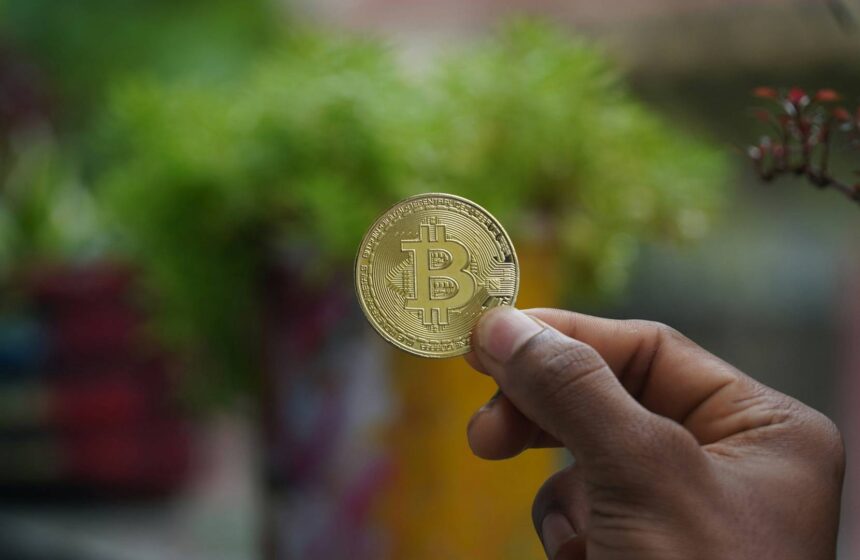Few words in the cryptocurrency world have become as iconic as “HODL.”
What began as a typo on an internet forum in 2013 has evolved into a philosophy — even a movement — among Bitcoin believers. To “HODL” means to hold your Bitcoin through thick and thin, ignoring market volatility, price crashes, and the endless noise of speculation. But beyond memes and slogans, there is a deep psychological truth behind this idea. HODLing is not just about holding a coin; it’s about mastering emotion, embracing patience, and understanding the nature of value in a digital age.
Bitcoin’s journey has always been a test of conviction. Since its creation in 2009, it has faced countless cycles of euphoria and despair. The price has soared to unimaginable heights, only to crash and test the faith of even the most steadfast believers. Yet, through every downturn, a core group of holders — the true HODLers — have remained. Their consistency is not an accident; it’s rooted in a unique psychological perspective that separates short-term traders from long-term thinkers.
At the heart of the HODL mindset lies the battle between fear and faith. Traditional markets are guided by similar forces, but in crypto, the emotions are magnified. Bitcoin doesn’t have earnings reports, dividends, or a central authority to stabilize its value. Its worth is determined purely by belief — the collective confidence of those who see it as a future form of money. When prices fall, fear takes over for those who are uncertain. But for HODLers, the volatility is noise, not signal. They focus on fundamentals — scarcity, decentralization, and long-term adoption — rather than daily fluctuations.
Psychologists call this behavior “delayed gratification.” It’s the same principle behind saving for retirement or investing in education — giving up short-term comfort for future reward. In Bitcoin’s case, it means resisting the urge to sell during panic and trusting the larger trend of adoption and limited supply. Those who have managed to hold through multiple cycles often describe it as a test of character as much as an investment decision.
The HODL mentality also ties into the concept of identity. For many, owning Bitcoin isn’t just about profit; it’s a statement of belief in financial independence. It’s about rejecting inflationary systems and centralized control. In this way, HODLing becomes both a personal and ideological act. When holders refuse to sell, even during market crashes, they’re not just preserving their assets — they’re reaffirming their values. The ability to withstand uncertainty becomes a badge of honor in the crypto community.
Interestingly, behavioral economics provides an explanation for why HODLing works. Studies have shown that frequent monitoring of investments leads to worse performance because it increases anxiety and impulsive decisions. In traditional investing, those who check their portfolios daily are more likely to sell in fear. Bitcoin amplifies this effect because its market never sleeps. The 24/7 trading cycle means temptation is constant. HODLers, by contrast, detach from the short-term mindset. They reduce emotional stress by accepting volatility as part of the process. Instead of reacting to every red candle, they zoom out — thinking in years, not days.
This long-term perspective aligns perfectly with Bitcoin’s own design. The halving cycles, which reduce the supply of new coins every four years, naturally reward patience. Historically, those who held their Bitcoin through multiple halvings have seen exponential returns, while short-term traders often got lost in the noise of corrections. HODLing, therefore, isn’t blind stubbornness — it’s strategic. It recognizes that Bitcoin’s power lies in time and scarcity, not in short-term speculation.
Still, HODLing isn’t easy. It requires emotional discipline that most investors struggle to maintain. The media amplifies fear during crashes and greed during rallies. Newcomers panic when they see their portfolio drop 50%, forgetting that such swings are common in an emerging asset class. Veteran holders learn to do something counterintuitive — nothing. They tune out the chaos and trust the process. In a way, the act of doing nothing becomes an active strategy.
Social dynamics also play a role. The Bitcoin community reinforces the HODL behavior through shared experience and culture. Online forums, memes, and even humor act as emotional buffers during downturns. They remind holders that volatility is temporary but conviction is permanent. It’s a collective form of resilience — a psychological network that helps individuals stay grounded when prices test their patience.
From a broader perspective, HODLing mirrors the evolution of belief systems. Throughout history, transformative technologies — from the internet to electricity — required decades of persistence before mass acceptance. Early adopters endured skepticism, ridicule, and uncertainty. Bitcoin’s path is similar. Those who HODL are, in essence, betting on a future where decentralized, programmable money becomes the norm. Their patience is a form of conviction that fuels Bitcoin’s very stability.
In 2025, the crypto market is more complex than ever, filled with new coins, speculative trends, and rapid innovation. Yet Bitcoin still stands at the center — not because it changes fast, but because it doesn’t need to. Its value proposition remains simple, transparent, and uncorrupted. And the people who hold it, through every storm, are what keep that value alive.
HODLing, ultimately, is about understanding human nature as much as market behavior. It’s the acknowledgment that success often comes to those who can endure discomfort, ignore noise, and believe in something larger than immediate gain. As long as Bitcoin exists, volatility will follow — but so will the holders who understand that patience, not panic, is what truly wins in the end.
